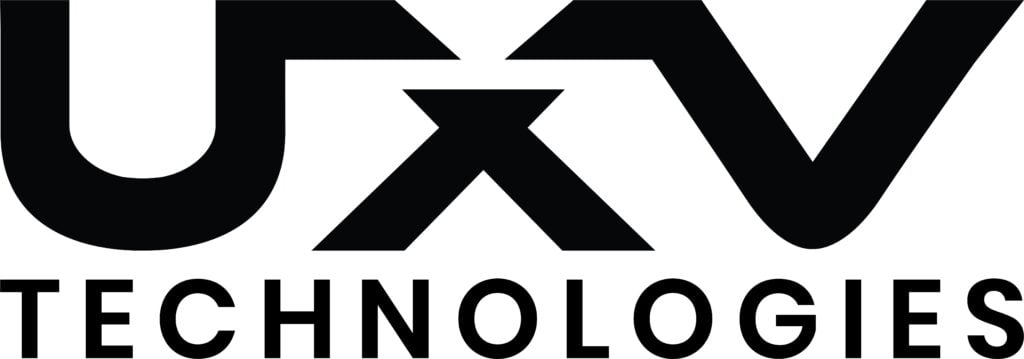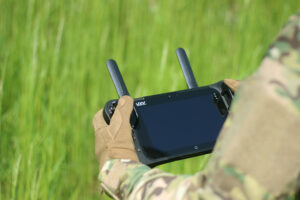UXV Technologies has released the following article that details a number of factors that you should consider before choosing a ground control station (GCS) for your drone or unmanned vehicle.
Ground control stations come in many shapes and sizes and the price can differ significantly. Before initiating the design and purchase of a ground control station it is important to define the “need to have” and “nice to have” requirements. These are impacted by the operations for which the ground control station is being used, and the capabilities of the unit being controlled. Below, you will find some of the typical factors that can impact your choice of ground control station.
1. Operational environments & conditions:
The operational environment and conditions are important factors to take into consideration, before designing and purchasing the ground control station. The environmental conditions are important because they directly affect the performance of the operation, the reliability of the equipment, and how efficient the remote workers are.
Some key elements to consider include:
1. Day/night time operations – Operations in dark environments might require special attention and a NVG compatible ground control station. This allows the equipment to be used while wearing a night vision device such as night vision goggles.
2. Operations in environments with radio disturbances – Radio disturbances can impact the operation in various ways such as limiting the range of the video/communication link and thereby affecting the quality output and the reliability of the operation. Radio disturbance risks can in many ways be reduced by choosing the right communication equipment.
3. Operations where other equipment can be impacted by the electromagnetic disturbances caused by the GCS – Choosing or designing a ground control station that is EMC compliant ensures that components do not influence the electromagnetic environment to the extent that the functions of other devices and systems are affected.
2. Operations over longer time spans
Long operations introduce various requirements for the GCS. First of all ,the battery requirements should be carefully investigated. The battery requirements can be met by choosing a GCS with an extended battery capacity or one that allows you to “hot-swap” battery modules without interrupting the operation. Another key parameters for long operations is the ergonomy of the GCS. By choosing a GCS platform with carefully designed ergonomic factors, such as weight and physical dimensions, you can improve operator efficiency and satisfaction.
3. Monitor requirements
Most operators initially want a very large screen since it generally improves the ease of use. However, the choice of screen size should be carefully considered because it directly impacts operations. The screen size can be affected by factors such as the software being used, the use-case and requirements for portability and ergonomics. Most modern GCS software suites work very well on smaller screens, especially if additional tools such as pointers are being used. Still, it should be considered if the screen size being offered matches the operator needs. Besides the size and dimensions of the screen, most operations also require sunlight readability.
4. Joysticks, buttons, and switches
The choices of buttons and switches and their layout should be carefully considered, since they impact the operator performance, ease of use, and the security of the operations. Buttons, switches, and joysticks come in many different shapes and sizes.
Standard GCS platforms often do not offer customization of the layout, however for custom GCS solutions the buttons, switches and joysticks can often be chosen and customized based on the operator needs. This enables more advanced use cases such as protection of specific functionality with the use of safety switches and ensuring operator efficiency by adding extra joysticks.
5. Setup time
In order to support efficient operations, the time it takes to set up all the equipment needed in order to initiate an operation can be a relevant factor. In many cases this time has an impact on the security of the operator and the results of the operation. A shorter setup time can be obtained by using integrated solutions which directly limit the equipment that needs to be prepared before starting the operation. Simple GCS platforms can furthermore limit the operator stress and reduce the risk of mistakes during the setup.
6. Operating systems
Ground control stations come in various shapes and sizes. Some offer full-functional operating systems (OS) and some only offer joysticks and buttons. Running an integrated operating system inside the GCS often results in improved operator performance. This enables more advanced control of the unit being operated and generally improves the operator stress by tailoring the software applications to be more user-friendly and efficient.
7. Serviceability
Running an efficient operation often requires a high level of serviceability. This includes the option of purchasing spare parts and the ability to get the ground control station repaired or serviced regularly or in the case of damage. Designing a remote controlled solution using a ground control station consisting of components that are not produced anymore can pose a major risk.
8. Compliance
Integrators or users of ground control stations can be met with compliance requirements when delivering products or services to certain markets. Therefore it can be relevant to consider the GCS’s compliance in terms of NDAA, ITAR, or standards such as MIL-810G.
9. Platform Security
Security is a crucial factor for many types of remote controlled vehicles. Security risks can come in many variations, including takeover/hijacking of the equipment, jamming, availability of the GCS, risk of data-loss and data leaks. These individual risks can be reduced by using various types of technology such as communication encryption, updated platform software and by enforcing enterprise cyber security policies. Many organizations are today met with stricter security measures such as control of the vendors/countries producing the parts of the GCS.
10. Integrations
For advanced use-cases it is often required to run custom software on the ground control station, making sure that it can be integrated in order to receive the input from buttons, switches, and other types of input devices. Systems integrators and OEMs should therefore consider which integration methods are possible for the specific GCS. Some key elements to look at include whether the GCS supports the HID interface, which is a standard protocol for integrating input devices with software in Windows/Linux. Another integration method is the use of APIs, which document and manage how the software can integrate with the GCS. Besides the software integration it can also be beneficial to integrate the GCS with hardware modules, which can be connected using various methods such as USB, serial, or other docking methods.











